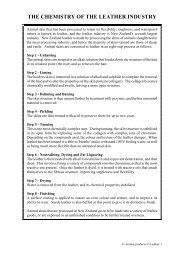BASF defoaming explanaiton
You also want an ePaper? Increase the reach of your titles
YUMPU automatically turns print PDFs into web optimized ePapers that Google loves.
Edge crawling<br />
faster<br />
evaporation<br />
substrate<br />
substrate<br />
Floating (Bénard cells) and silking<br />
horizontal Bénard cells<br />
no Bénard cells<br />
Telegraphing – Telegraphing (ghosting) occurs, when areas<br />
of different surface tension on the substrate are formed by<br />
wiping, by residual traces of a cleaning liquid or by finger<br />
prints. These marks appear on the surface of the applied<br />
paint film. This effect is clearly seen when the substrate/<br />
base coat contains interfacial active substances.<br />
takes place, leading to a stronger increase of surface<br />
tension than in the rest of the liquid film. A higher surface<br />
tension causes the liquid to crawl, because it is trying to<br />
adopt a smaller overall surface.<br />
This problem is avoided by lowering the surface tension<br />
of the liquid.<br />
Air-draft sensitivity – Local differences in surface tension<br />
of the paint caused by non-uniform evaporation of the<br />
solvent can cause air-draft sensitivity. Locally confined<br />
evaporation leads to an increased surface tension in the<br />
film. Rupture of the film can take place when this surface<br />
tension rises above the substrate’s surface tension,<br />
and de-wetting takes place. This problem is avoided by<br />
lowering the surface tension of the liquid.<br />
Edge crawling – Edge crawling is found at the edges of<br />
the substrate, because the surface of the applied paint film<br />
is larger at the edges. Here faster evaporation of solvents<br />
Floating (Bénard cells) and silking – Floating and silking<br />
are related to processes taking place in the liquid paint<br />
during the drying phase. Differences in the density and<br />
surface tension give rise to turbulent flow of material<br />
from the lower to the upper part of the film. In pigmented<br />
systems, the pigments settle in different areas depending<br />
on their mobility. On horizontal surfaces, this floating is seen<br />
as hexagonal patterns; so-called Bénard cells. Silking has<br />
the same origin but is limited to vertical surfaces and shows<br />
as line-shaped patterns. These defects can be avoided by<br />
minimizing the surface tension differences occurring during<br />
the drying process.<br />
10 11




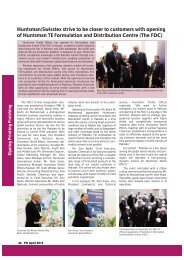

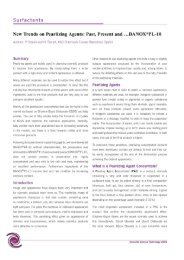

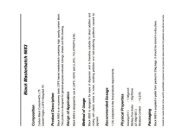


![[Ulwick_A.W.]_Business_Strategy_Formulation_Theor(BookZZ.org)](https://img.yumpu.com/56355932/1/190x240/ulwick-aw-business-strategy-formulation-theorbookzzorg.jpg?quality=85)

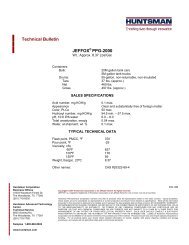

![Desmond Morris - 2002 - Peoplewatching - The Desmond Morris Guide to Body Language (poor quality-double page)(290p) [Inua]](https://img.yumpu.com/54998318/1/189x260/desmond-morris-2002-peoplewatching-the-desmond-morris-guide-to-body-language-poor-quality-double-page290p-inua.jpg?quality=85)
